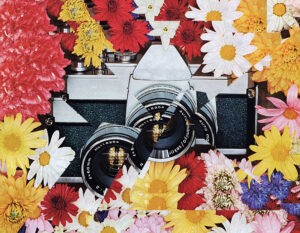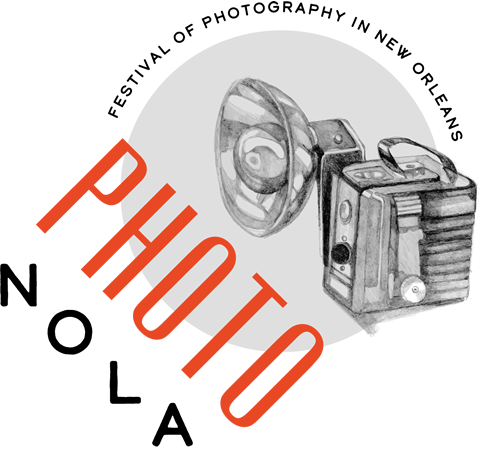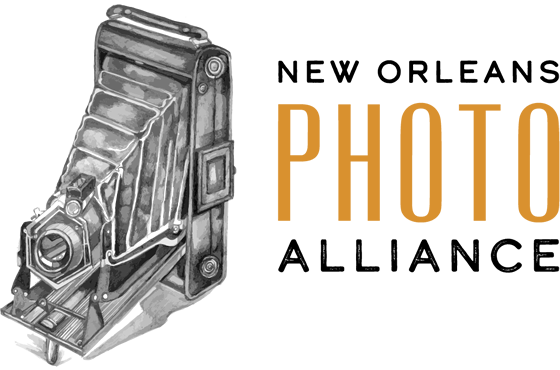 The mediums of collage and photography are bound together in an ongoing dialogue. The photographer makes pictures of the world. The collagist remixes those pictures to tell a story about the world we live in. What happens when the photographer begins collaging their own work? What happens when the collage artist picks up the camera?
The mediums of collage and photography are bound together in an ongoing dialogue. The photographer makes pictures of the world. The collagist remixes those pictures to tell a story about the world we live in. What happens when the photographer begins collaging their own work? What happens when the collage artist picks up the camera?
“Camera & Collage” brings together artists from Australia, Kuwait, Mexico, Canada, and the United States each of whom have developed a practice that sits at the intersection of collage and photography. The artwork demonstrates a variety of techniques and approaches. The artists are engaged in collage as process; making art with family archives and found materials; exploring alternative processes; and challenging how we think about images in a world flooded with them. In doing this, the artists invite viewers to consider questions of identity and gender; family and memory; the materiality of photography; and history and artist process.
The cyanotypes of Robert A. Schaefer, Jr. (New Orleans, Louisiana, USA) demonstrate how the medium is an example of collage process. The “layering of the images and their colors draw viewers into another dimension of space and time with the impact of inner reflection.” Demonstrating how collage can transcend time, Claire Hansen (Brooklyn, New York, USA) makes tintypes using a wet plate collodion process that incorporates images taken from inside contemporary video games. Inspired by the minimalism of John Stezaker’s collage, Jan Kather (Elmira Heights, New York, USA) photographs a photograph of the Lackawanna Trail at the point the photograph was taken. Using an inkjet gel transfer process, Jennifer Mead (Tucson, Arizona, USA) brings photographs from her family’s archive and her contemporary photography into conversation about her religious upbringing.
Lance Rothstein (Clearwater, Florida, USA) demonstrates collage’s ability to disrupt and contemplate a photograph by presenting an image of a Marigny street corner that was made of “five different silver gelatin darkroom prints of the exact same image, using various types of paper with different weights, surfaces, and toners.” Mónica McCumber Avilés (Cuernavaca, Morelos, Mexico) prints her photographs on transparent tracing paper and collages them to make “the image more ethereal and belonging to the memories and to the unconsciousness.”
Maryam Hosseinnia (Kuwait City, Kuwait) collages her photographs “to navigate the duality of my identity as an American-Iranian” and introduce “depth and ambiguity in my visual compositions.” Brandon Thomas Brown (Brooklyn, New York, USA) collages historical materials into his own photographs as a way to interrogate contemporary Blackness. Catharine Bramkamp (Nevada City, California, USA) presents images of decimated land and deleted cultures by collaging her own photographs of historic sites. Wanting us to consider rocks as an archive, Naomi White (Los Angeles, California, USA) disrupts her photographs with collage. She wrote, “Like a camera, rocks record and bear witness to our collective past. In the gasses they trap, every environmental change is stored forever, cataloging the unending story of the destruction of our planet and its inhabitants by a dominant class. They hold an undeniable truth in a world of shifting disinformation.”
The abstract series, “The Language of Posing” by Amanda Gardner (Dayboro, Queensland, Australia), interprets the five classic poses as a comment on “how conformity requires us to re-package ourselves into acceptability.” Dafna Steinberg (Swarthmore, Pennsylvania, USA) “returned to my photographic archives, utilizing numerous photographs I have made over the years (that never ended up as parts of projects or series) as material for collages.” The artist wrote, “I am finding a thread of meaning that strings them together, like laundry on a washing line and realizing that everything connects through the trajectory of my artistic life and practice.” Spencer Steiner (Brooklyn, New York , USA) “excavates the concept of memory and nostalgia” using miniature snapshots from the 1950s-60s found at the Brimfield Flea Market in Massachusetts. They wrote, “This tension between past and present, paired with the imagery of trash and detritus, evokes the essence of the material residue from celebrations and moments of spectacle.”
Alejandra Spruill (Orange, Massachusetts, USA) disturbs her photographs with fragments of cyanotype “to evoke a sense of puzzle-solving, a visual metaphor for how disparate elements can coalesce into a unified whole work.” Guylaine Séguin (Montreal, Quebec, Canada) uses collage to “explicitly unravel the constructed nature of image and highlight the deception and fabrication of images inhabiting our world.” Ric Kasini Kadour (New Orleans, Louisiana, USA & Montreal, Quebec, Canada) presents a work from his “Broken Windows” series. The artist scans, enlarges, and then rephotographs an analog collage as a way to reflect on how visual data makes its way through culture and the distortions that take place as we view images through multiple media and formats.
The Polaroids of influential printmaker Jim Steg (1922-2001) (New Orleans, Louisiana, USA) were created in the late ‘80s and ‘90s. Curator and photographer Jennifer Shaw wrote, “He took instant pictures with an SX-70, often from the television screen, then deftly altered them. The subjects include faces, figures, and ephemera, and the images frequently reference art history. As objects, they’re highly manipulated, both by surface pressure to affect the internal chemical development, and external processes including cutting, drawing, painting, and collage. The collection exudes a raw, punkish energy, while also expanding on themes that Steg explored throughout his career.”
The exhibition, “Camera & Collage”, takes place at Kolaj Institute Gallery from 29 November 2024 to 25 January 2025 as part of PhotoNOLA 2024, an annual celebration of photography in New Orleans, produced by the New Orleans Photo Alliance in partnership with museums, galleries, and alternative venues citywide. The exhibition is the third in a series in which Kolaj Institute is exploring the intersection of Photography & Collage.
The Gallery is located at 2374 Saint Claude Avenue, Suite 230, at the corner with St. Roch Avenue above the Peach Cobbler Factory. The Gallery is open Thursday-Saturday, Noon-6PM or by appointment and until 9PM on Second Saturday.
| Featured Artist or Artists: | |
| Alejandra Spruill (Orange, Massachusetts, USA) Amanda Gardner (Dayboro, Queensland, Australia) Brandon Thomas Brown (Brooklyn, New York, USA) Catharine Bramkamp (Nevada City, California, USA) Claire Hansen (Brooklyn, New York, USA) Dafna Steinberg (Swarthmore, Pennsylvania, USA) Guylaine Séguin (Montreal, Quebec, Canada) Jan Kather (Elmira Heights, New York , USA) Jennifer Mead (Tucson, Arizona, USA) Lance Rothstein (Clearwater, Florida, USA) Maryam Hosseinnia (Kuwait, , Kuwait) Mónica McCumber Avilés (Cuernavaca, Morelos, Mexico) Naomi White (Los Angeles, California, USA) Robert A. Schaefer, Jr. (New Orleans, Louisiana, USA) Spencer Steiner (Brooklyn, New York , USA) Jim Steg (1922-2001) (New Orleans, Louisiana, USA) | |
| Venue Website: | |
| https://kolajinstitute.org/ | |
| Exhibition Link | |
| https://kolajinstitute.org/kolaj-institute-gallery-new-orleans/#camera-collage | |
| Venue address: | |
2374 St Claude Ave #230 New Orleans, LA 70117 (802) 264-4839 Thurs-Sat 12-6pm and by appointment Map It |
|
| Venue Phone Number: | |
| (802) 264-4839 | |
| Venue Operating Hours: | |
| The gallery is open Thursday through Saturday from Noon to 6PM and by appointment. | |
| Exhibition Start Date | |
| 11/29/2024 | |
| Exhibition End Date | |
| 01/25/2025 | |
| Will you host a public opening? | |
|
|
| Opening Event Date & Time | |
| December 14, 2024, 6PM to 8PM |

